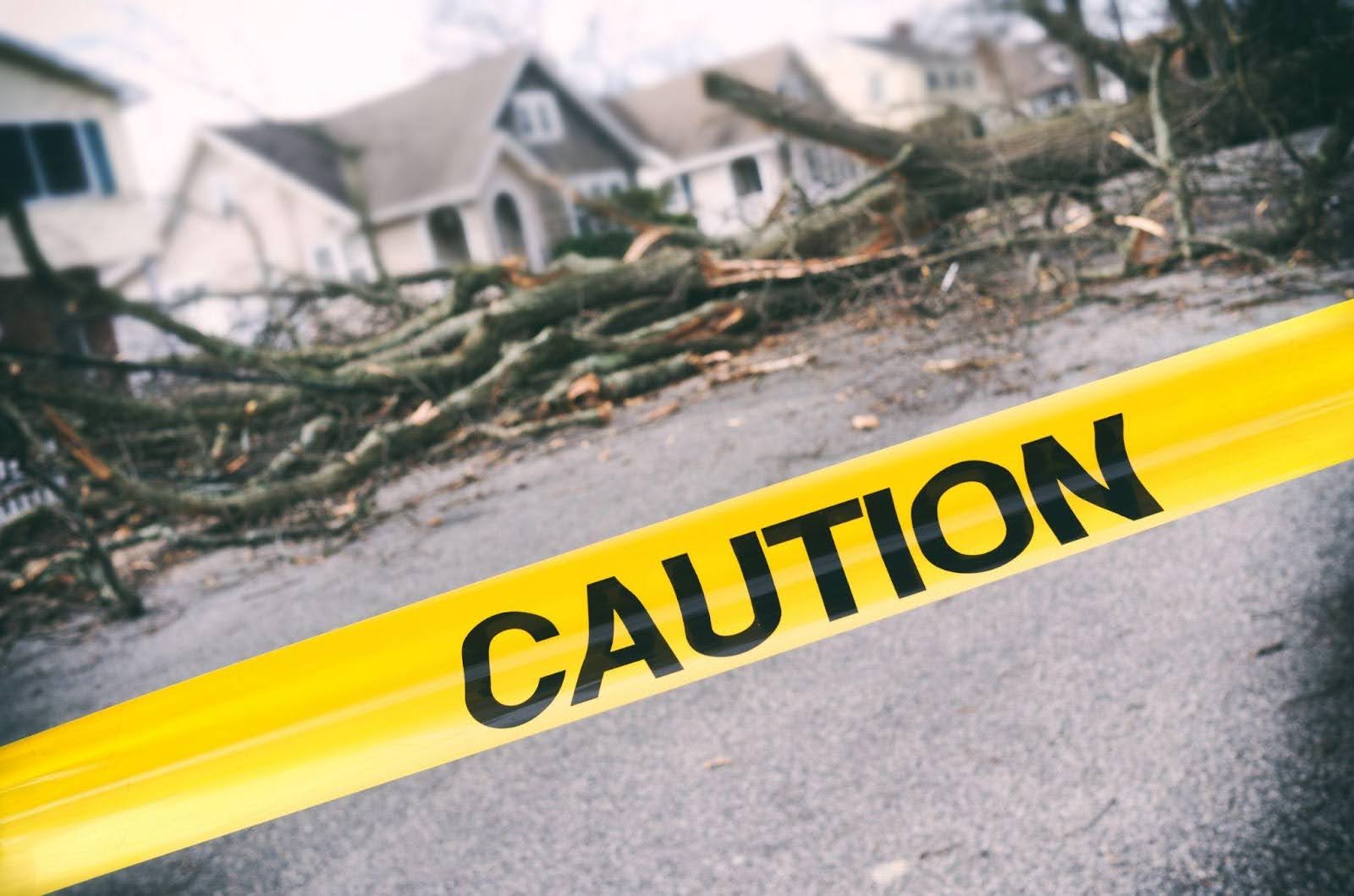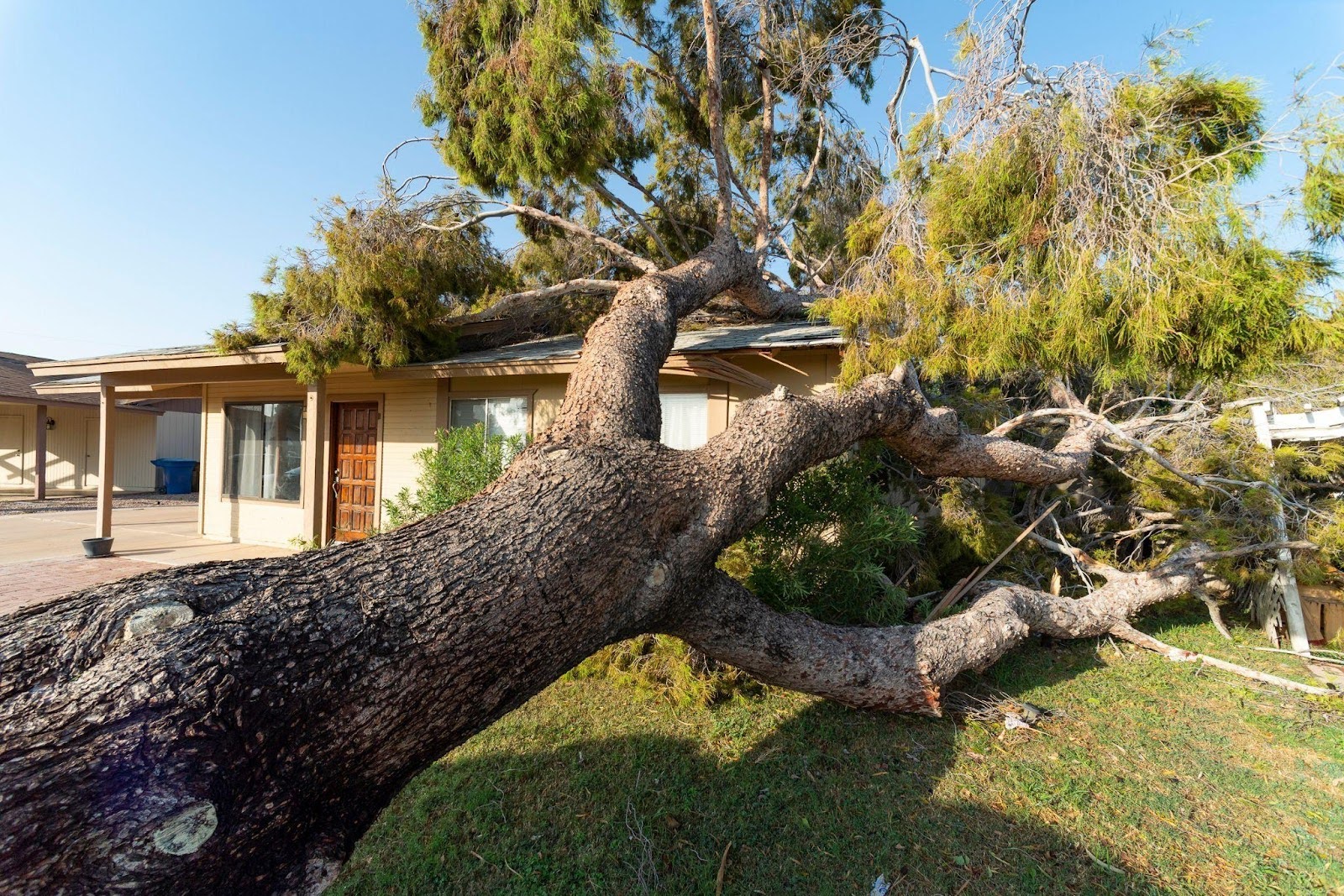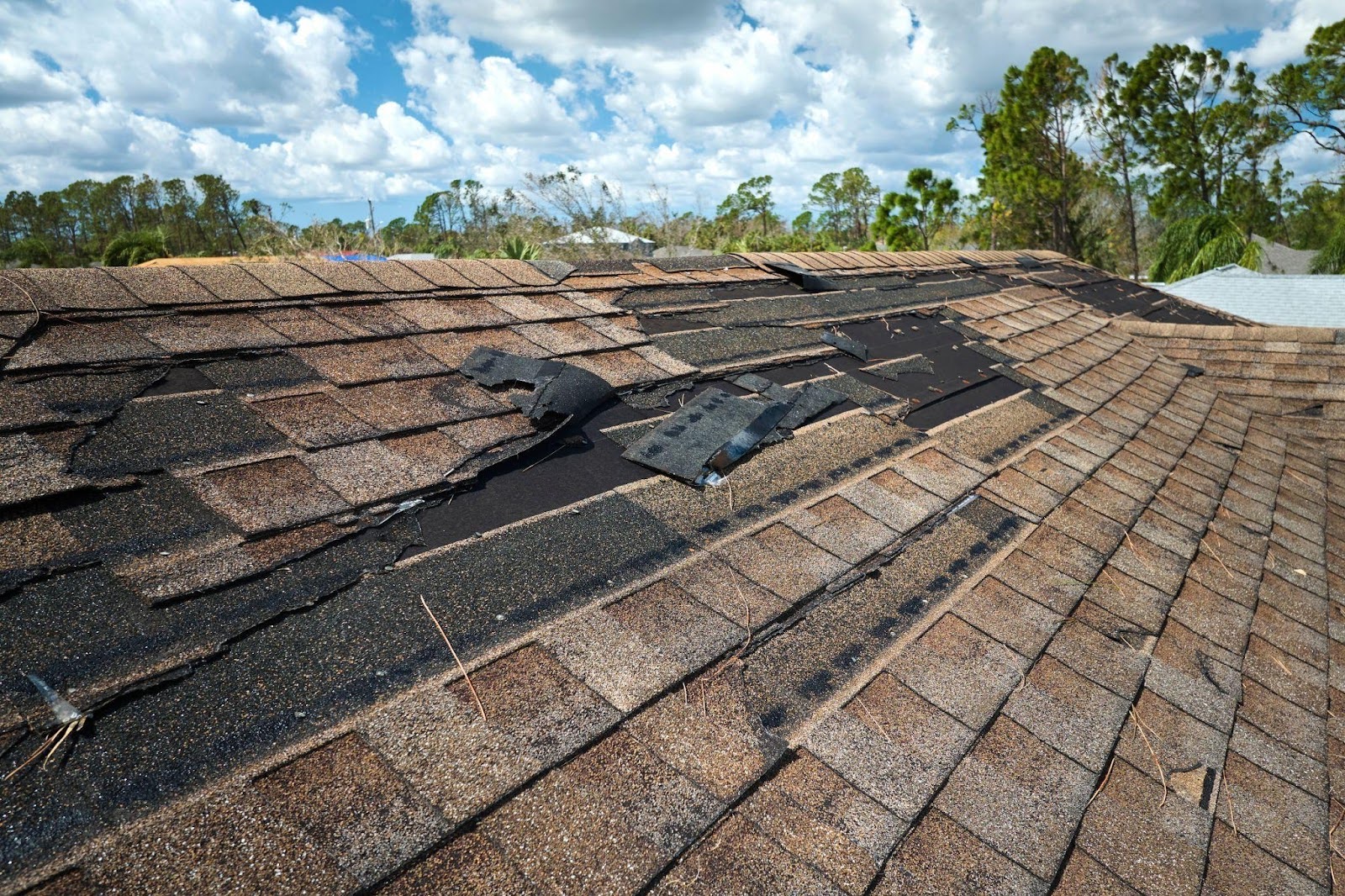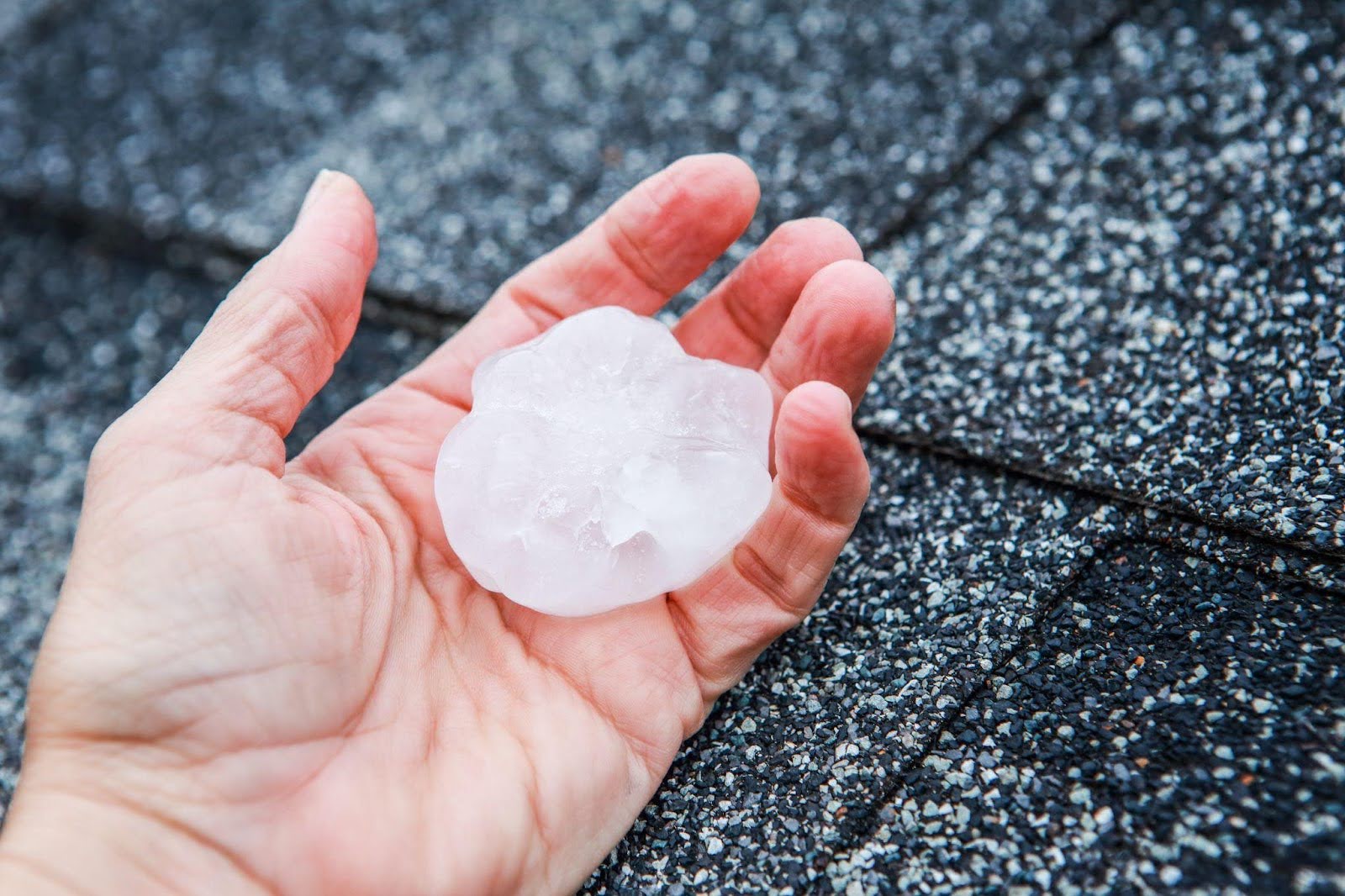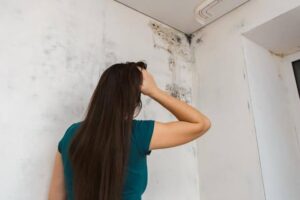Storm damage refers to destruction caused by severe weather events that impact homes, buildings, and other property. This includes damage from hurricanes, tornadoes, thunderstorms, and winter storms, as well as lightning strikes, falling trees or branches, hail, and high winds.
Common storm damage affects roofs, windows, doors, walls, and even foundations. It can also include flooding, erosion, and in some cases, landslides triggered by heavy rain or unstable soil conditions.
Remember that not all storm-related damage is covered by every insurance policy. If a storm is approaching or your property has already been affected — it’s a good idea to review your coverage and understand what’s included. And if you need storm damage restoration, acting quickly can help prevent more costly repairs down the road.
Types of storms
Storms can strike in many forms, each bringing risks to your home or property. The type of storm damage you face from high winds and heavy rain to ice, snow, and flooding depends on the weather event.
Here’s a breakdown of the most common types of storm damage and how they impact buildings and structures.
Hurricanes
With powerful winds that exceed 100 mph and relentless rainfall, hurricanes often lead to roof damage, flooding, fallen trees, and structural weakening.
In coastal areas, storm surges add another layer of destruction, washing away foundations and flooding entire neighborhoods. After a hurricane, fast action helps prevent further damage from standing water and weakened structures.
Tornadoes
Tornadoes strike quickly and with incredible force, tearing through homes and buildings with little warning. These fast-moving cyclones produce extremely high winds that can rip roofs off houses, shatter windows, and toss debris through the air like missiles.
The aftermath often includes collapsed walls, destroyed outbuildings, and widespread chaos. Even a brief tornado may leave behind devastating damage that requires expert restoration and structural assessment.
Thunderstorms
Thunderstorms may seem common, but they bring a powerful mix of hazards. Strong winds can tear off shingles and topple fences, while heavy rain may lead to leaks or flash flooding.
Lightning strikes pose a fire risk and may damage electrical systems, while hail cracks siding, dents vehicles, and breaks windows. The variety of threats in a single thunderstorm means even a short storm can leave behind a long list of repairs.
Winter storms
Winter storms don’t need to be violent to be destructive. Snow and ice buildup on roofs may cause structural strain or collapse, while freezing temperatures may burst pipes and damage plumbing.
Strong winter winds increase the risk of falling branches and flying debris. Ice accumulation on driveways, gutters, and porches also leads to slips, leaks, and long-term water damage when melting occurs. A fast response helps prevent bigger issues as temperatures rise.
Floods
Floods are among the most damaging natural events a property can face. Whether caused by heavy rain, blocked drainage, or rapidly melting snow, floodwater seeps into basements, soaks drywall, warps floors, and ruins furniture.
Worse yet, it often brings contamination, leading to mold and health risks. Quick water removal and proper decontamination are critical to salvaging property and belongings and preventing long-term issues.
Windstorms
Even without rain or snow, windstorms can wreak havoc on a home. High winds can tear off shingles, rip siding, and send tree limbs crashing into roofs and windows. Loose outdoor items become dangerous projectiles, and fences, awnings, or detached garages may be pulled apart.
After a windstorm, it’s important to inspect the property thoroughly. Some damage may be hidden but still severe.
Preparing for these storms
While you can’t control the weather, you can take steps to protect your home before a storm hits. Preparing ahead of time helps reduce the risk of damage and makes recovery easier. Here are a few ways to prepare your property for the most common types of storms.
Install storm shutters or reinforce windows and doors
Storm shutters help protect your windows, minimizing the risk of them breaking during a storm. Reinforcing your windows will help them withstand strong winds and flying debris.
Trim trees and remove dead branches
Trimming trees and removing dead branches will help prevent them from falling on your home during a storm.
Secure loose items
Outdoor furniture, trash cans, and decorations might become projectiles during a storm, so it’s a good idea to secure them down.
Have an emergency supply kit
Keep an emergency kit on hand that includes non-perishable food, water, flashlights, batteries, a first aid kit, and other essential items.
Install a backup generator
Installing a backup generator is a smart way to keep your home powered during and after a storm. When the grid goes down, a generator can keep essentials like lights, refrigerators, and medical devices running. This adds comfort and safety and helps prevent secondary issues like food spoilage or frozen pipes during winter storms.
Know your evacuation routes
Evacuation may be necessary during severe storms. Take time to learn your local evacuation routes and have more than one option in case roads are blocked. Keep a printed map in your emergency kit, and make sure everyone in your household knows where to go and how to get there quickly.
Have a plan for your pets
Your pets are part of the family, so include them in your storm prep. Make sure you have enough food, water, and medications for them, and know which shelters or hotels in your area allow animals. Keep a leash, carrier, and their important documents ready in case you need to leave in a hurry.
After the storm: Hazards to be aware of
Downed power lines
A storm might knock down your power lines, and debris might hide them, creating an electrocution risk. Call the local authorities and stay away to protect yourself if you can see any downed power lines.
Structural damage
Storms may cause structural damage to a building, making it unstable or unsafe to enter. It’s important to carefully assess a structure’s safety before entering and to wear a hard hat and protective gear to minimize the risk of injury.
Debris
Storms leave behind a lot of debris, including broken glass, sharp metal, and splintered wood. This debris may cause cuts and other injuries if you’re not careful.
Wildlife
Storms may displace wildlife (snakes, rodents, or insects), so be aware of your surroundings.
Flooding
If the storm causes flooding, there may be hidden hazards in the water, such as sharp objects, contaminated water, and unstable ground. Be careful when working in or near floodwater.
Even with taking these precautions, you might still encounter dangers, so hiring a storm damage restoration company is your best bet.
Reasons to hire professional storm damage repair services
Safety
There’s often dangerous debris, damaged structures, and other hazards after a storm. Professionals have the training and experience to navigate storm-damaged sites and safely remove debris and other hazards.
Expertise
Professionals have the knowledge and expertise to assess damage properly and determine the best course of action for cleaning and repairing it.
Equipment
Professionals have access to specialized equipment and tools that you can use to safely and effectively clean up and repair damage.
Saving time
Cleaning up after a storm is time-consuming and labor-intensive. Professionals help you save time by quickly and efficiently completing the clean-up process.
Insurance
Many insurance policies require professional storm damage repair services. So, hiring a storm damage restoration company helps ensure that your insurance company covers the work done.
Contact Total Flood & Fire Restoration today
When storms strike, the damage can be overwhelming, but you don’t have to face it alone. Total Flood & Fire Restoration is here to provide storm damage repair services.
Whether you’re dealing with wind, rain, hail, or fallen debris, our expert team knows how to assess storm damage, restore your property, and guide you through the insurance process. Don’t wait for minor issues to turn into major problems.
Contact Total Flood & Fire Restoration today for fast, dependable storm damage restoration. We’re ready to protect your home and bring it back to life.

